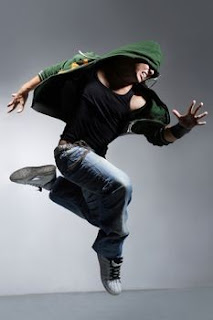The Hoodie.
The Hooded garment stemed back to the middle ages where monks would wear hoods as a part of their uniform.
http://www.carmelitemonks.org/habit.html
"The Carmelite monk wears the Holy Habit as an external sign of his complete consecration to God in the Vows of Obedience, Chastity and Poverty. The Holy Habit becomes for him a constant reminder that he is called to imitate the Blessed Virgin Mary; he, like a soldier, is clothed in the armor of the habit as he bravely does battle for God and for souls."It then became a uniform in the modern day when champion brought out hoodies for industry workers that worked in cold conditions like frozen food warehouses and such.
Hoodies then became popular in the 1970s with the hip hop scene and are still very popular today, in R&B and generally everywhere.
http://www.apparel-hoodie.com/the-history-of-hoodies-from-the-uniform-into-a-fashion-trend-6-11.html
The term "Hoodies" became popular in the 1990's, as they crept their way into high fashion. This would be a good example of the bubble up theory. Starting as a practicle garment into something that rose from the streets into high fashion, such as Gorgio Armani, Tommy Hilfiger, and Ralph Lauren
They became popular with the younger generations as a form of identity to which university you came from, which in a way is like a gang of sorts. It soon became popular with chav and gangs in the uk at least to use hoodies to conceal their identity. It became a huge stigma on hoodies.
Interveiw: Helen Jones
Why do you like wearing hoodies? : "They make me feel comfy and secure, when it rains its really easy to just wack up the hood."
Would you say you are a violent person? : "No! Not violent at all. Never had a fight in my life!"
When you see people in hoodies with their hoods up, what is your immediate reaction? : If they are boys, I walk faster. One person is ok, but a big group is intimidating.
Do you think not being able to see someones face is intimidating? : Yes.
If you had the choice would you ban hoodies? : God no! It's just the way they're worn. Hoods should be down in a public place though.
Below is a link about Lady sovreign and her campaign to defend hoodies.
That statement says alot, for example, head scarves hide peoples faces and they don't really have any connotations with violence but people were threatened by them and there was talk of having them banned. In my opinion, if goggles came into fashion and lots of people started to wear them, it would only take a few groups of goggle wearers to reach the news doing something stupid and endangering for goggles to be the next symbol of violence.
It is quite similar to when france decided to ban the burqa, people bacame intimidated by not being able to see others faces and even went as far as to inturrupt peoples beleifs and customs.
Below is a link, informing us about an experiment that they plan to execute on 'hoodies' to determine why they're so angry.
A Tool. In Fashion.
Above is a link about one of the Derren Brown's experiments which was called the game show. It took away the identity of the individuals, opening their behaviours to work as a pack or a "gang". This took away a sense of peoples morals and made them cruel.
"The moment you loose your...any real sense of... identity, the moment you can act anonomously..and be part of a crowd, it very easily just leads to...anti-social behaviour." derren brown
"ANONYMITY AND AGGRESSIONPhilip Zimbardo took the Milgram experiment one stage further. In 1969 he set up an experiment in which female subjects were asked to monitor a task and give electric shocks to people who failed. This time, half of the subjects wore hoods and lab coats so that they could not be identified. The other half wore regular clothing. The hooded subjects issued electric shocks of twice the duration as the regularly dressed group. The conclusion is that anonymity leads to even greater deindividuation. Analysis of data in other situations where anonymity is found, whether the violent acts of masked paramilitaries or internet flaming and trolling by people using pseudonyms, has come to a similar conclusion."
This just goes to show, hoods can be used a tool for seclution and anonymity, which helps people desensitise there morals. Can hoods be dangerous?
Above is a link to other videos of and about the Derren Brown experiments.
Celebs and Hoodies.
Hiding or posing??
Below is a site explaining about "the hoodie"



















No comments:
Post a Comment